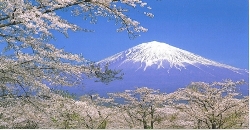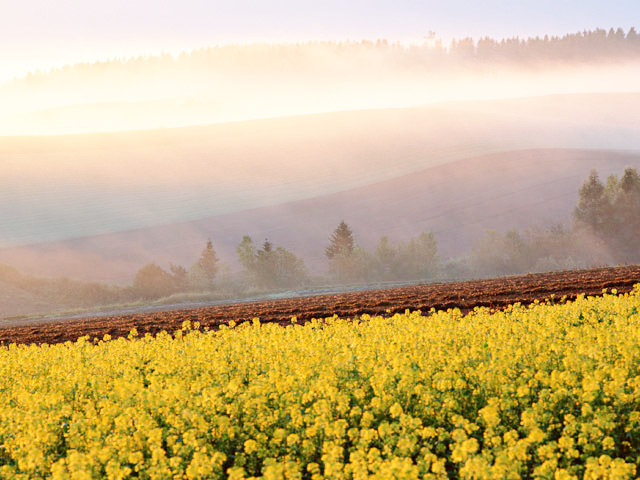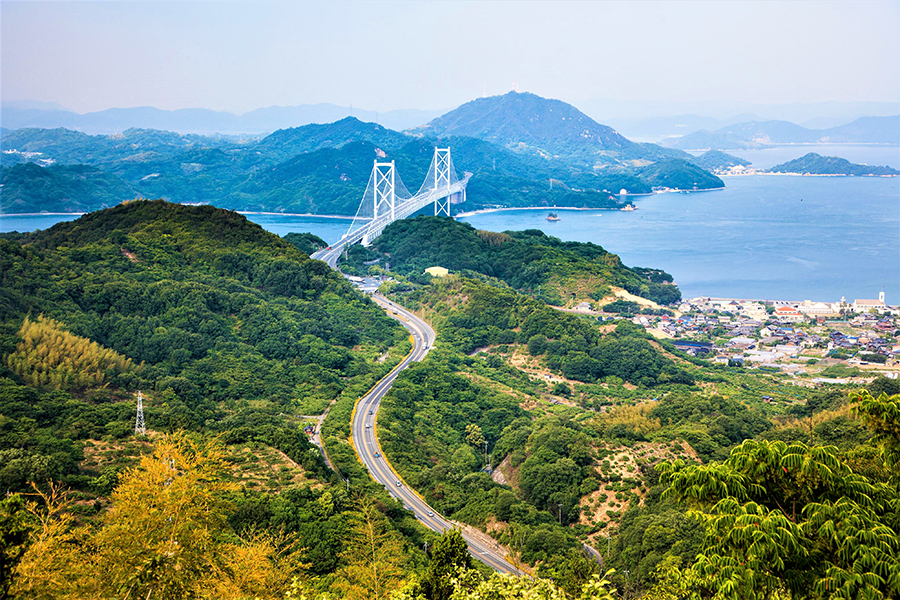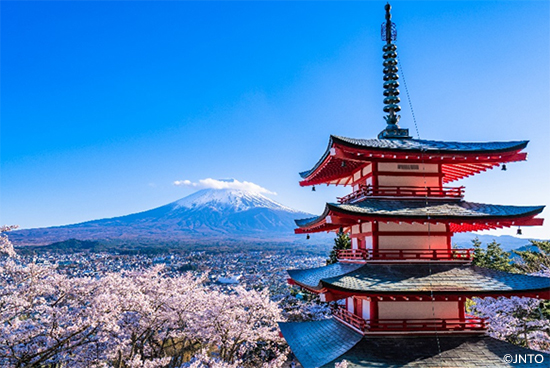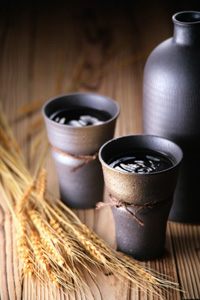Shochu is a distilled liquor, and it is the other indigenous alcoholic beverage of Japan. While it can be made from rice, like sake, it can also be made from several different raw materials, including sweet potatoes, buckwheat, barley, and sometimes even brown sugar and chestnuts. The alcoholic content hovers around 25%, but can reach 42% or more. Generally speaking, shochu has a stronger flavor and aroma than sake, but depending on the ingredients, and the type of distillation process, this can vary greatly.
Shochu, unlike sake which needs cooler temperatures for brewing, can be distilled in warmer areas. Kyushu is the center of production, and Kagoshima, near the southwestern tip of Kyushu, is considered shochu's traditional home; it is best known for its own inimitable imo-shochu, or shochu made from sweet potatoes. There are two methods of distillation: one results in allowing the personality of the raw ingredients to shine through, and is called honkaku, or "authentic". This type of shochu is often enjoyed straight, on the rocks, or mixed with a bit of hot or cold water. The other method results in a lighter tasting shochu, and a much greater quantity of this type is produced than the honkaku. It is very popular because its milder taste allows it to blend well. The crowd-pleasing cocktail called chu-hi (shochu highballs made with fruit flavors), served all over, and also sold as a canned drink, is a testament to this.
The true shochu connoisseur would most likely eschew the second type of shochu in favor of the honkaku shochu. Whichever you prefer, shochu is now enjoying its day in the sun. Consumption has steadily increased over the past few years, especially among young people, while beer and sake consumption have dropped. Another type of distilled beverage that is gaining in popularity is awamori, which is only made in the island group of Okinawa. While it is made from rice, the rice that is used is not the short-grain japonica type used for sake and shochu, but rather the long-grain indica rice imported from Thailand. The distillation process is also different. Awamori is meant to be aged for a long time, and the result of doing so is a richly flavored, mellow drink that some people liken to brandy!
These delicious beverages are integrally tied to the climate and culture of Japan, and you can enjoy shochu at most restaurants and izakaya in the country. Don't forget to ask for a glass of shochu, or a sip of awamori the next time you're out on the town! For more information on where to enjoy shochu, please visit here!















































